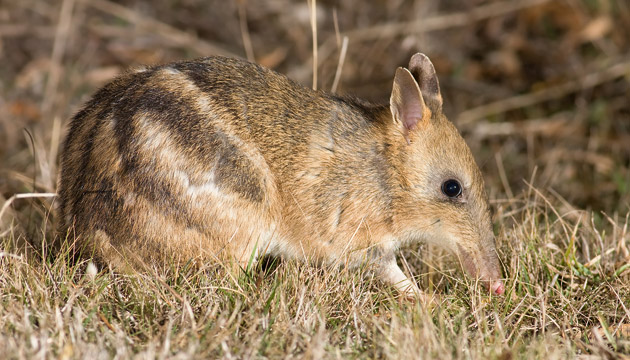Newly established populations of the eastern barred bandicoot are bringing this rare marsupial back from the brink of extinction.
Story + Photos Martin Auldist
There is a bandicoot in the very first trap that wildlife researcher Duncan Sutherland checks. It has been pitch dark for several hours but, guided by the light of a head torch, he tips up the trap and eases the animal into a black cotton sack. Ducan then uses the upturned trap as a seat while he weighs the rare marsupial and clutches it between his thighs to do some initial checks. If it was a female, it would be checked for pouch young, but it is a male and therefore a suitable candidate for further testing by a veterinary team on standby nearby. It goes back in the bag, at least for now.
Earlier in the afternoon, 51 cage traps had been set by Duncan’s colleague, Ross Holmberg, over a 50-hectare grid within the tea-tree and grassland of Summerland Peninsula, on Phillip Island, Vic. It is the second night of three consecutive nights trapping aimed at checking on the progress of a population of eastern barred bandicoots – known to the researchers as EBB – recently released onto the 424ha peninsula as part of a recovery program led by Duncan and his team from Phillip Island Nature Parks.
“Before we started, there were no EBB left in the wild,” Duncan says. “Once they were common over much of Victoria, but they were all but wiped out by introduced foxes and habitat loss. They live in shallow nests on the ground under low vegetation, and they’re just not equipped to deal with predation by foxes and cats.”
This story excerpt is from Issue #121
Outback Magazine: October/November 2018










